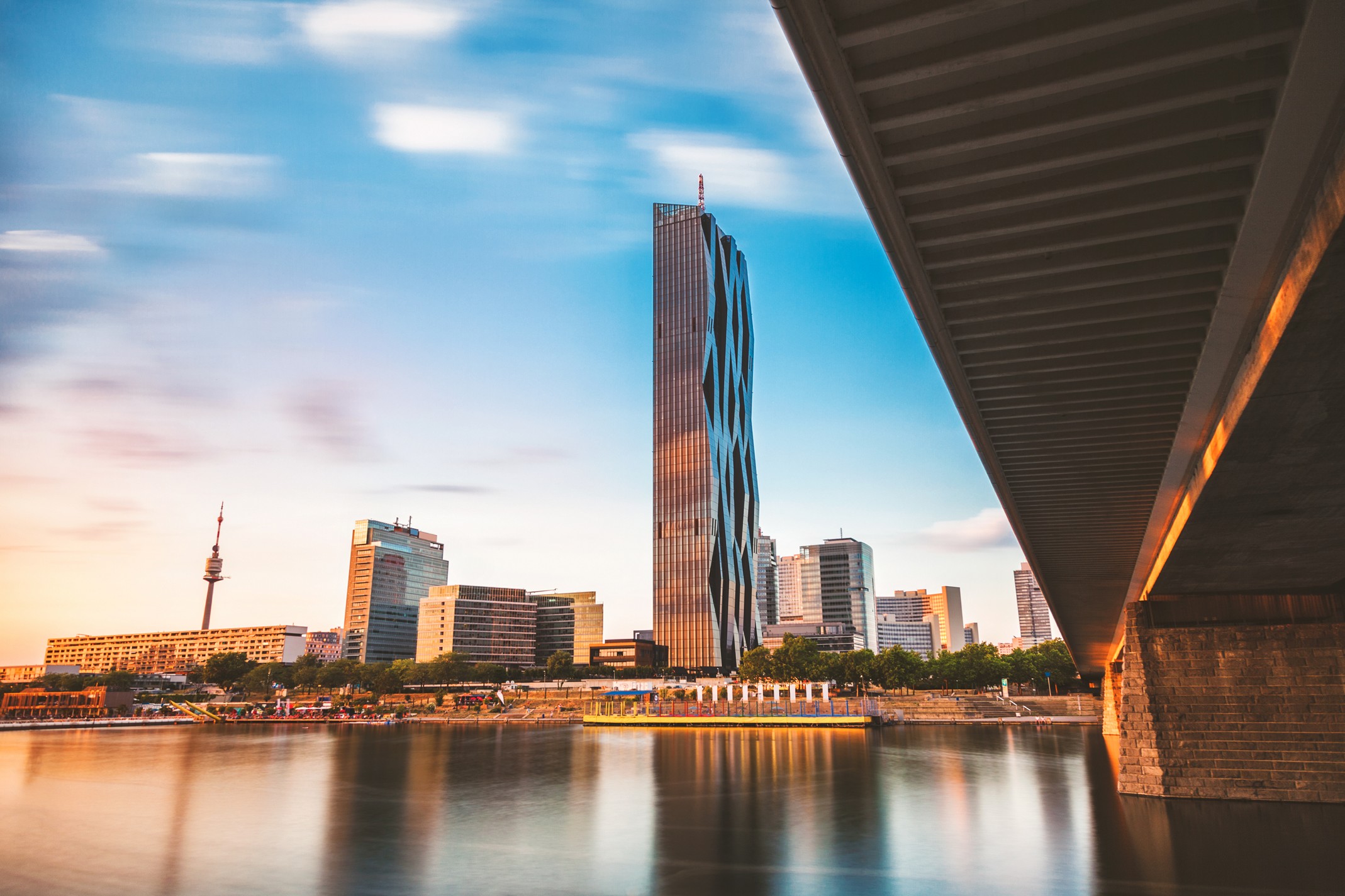Velo Europe and Cycling in Vienna and surroundings
The city strives to make cycling more attractive. There are numerous local city routes on how to explore the city.
For some of the routes from Vienna the Donau-Radweg is planned.
Vienna is always worth a trip, but the Danube city is much more interesting and versatile by bike.
Already in the Vienna city area there are numerous excursion possibilities that can be explored by bike.
There is for example a short city route to Schönbrunn Palace, the Wienerberg, the Untere Prater all lie a little outside the centre of Vienna.
The bike can be carried outside the Rush-hours in the underground and S train.
In most Viennese parks, however, cycling is not permitted and the bike must be pushed. Some castle parks even forbid the use of bicycles and you have to park your bike at the Entrance gate.
The routes through and out of the city take this into account as far as possible.
The Velo Europe day stages from Vienna
1) Vienna to Bratislava Danube, approx. 74 km, connection option to Györ or Komarno in large parts along the Danube
2) Vienna into the Wiener Neustadt, approx. 55 km, connection option to Semmering and further through the Mürztal to the Mur
3) Vienna to Mistelbach (Weinviertel), approx. 74 km, connection option to Laa Thaya or Breclav and further to Brünn
4) Vienna to Tulln an der Donau, approx. 48 km, connection option after Mautern an der Donau
5) Vienna to Lake Neusiedl (Neusiedl), approx. 59 km
6) Vienna Airport - Vienna City, approx. 18 km
7) Vienna- City Tour
The Velo Europe Routes from Vienna
Vienna to Bratislava and Budapest
If you cycle down the Danube from Vienna, you will already reach the Slovakian border after a mediocre day and a short time later the capital Bratislava.
In Bratislava, the March flows from the north into the Danube, the river that forms the border between Slovakia and Austria for many kilometres.
Further downstream along the Danube, which here is the border river between Slovakia and Hungary, through historical towns like Komorn and Gran / Esztergom and further to the Hungarian capital Budapest.
Vienna to Linz and Germany
If you decide to cycle up the river Danube from Vienna to the west, you can cycle through the Wachau to Linz or even further to Germany to Passau (or even further - see the possibilities from Linz to Prague).
Vienna to Salzburg and the Salzburger Land
On the way to Linz the Danube takes some rivers to the south which we can follow and one of them is one of the Enns.
The Enns is the longest river in Austria that flows only in Austria.
We follow the Enns from Mauthausen to Radstadt in the Salzburger Land.
From Radstadt we follow a cross connection to the Salzach valley - from St.Johann along the Salzach river downstream to Salzburg (option upstream towards Innsbruck see under Options from Salzburg).
Alternatively we leave the Danube at Linz and follow the Traun upstream - the Traun leads us towards the Salzkammergut and along many beautiful lakes we reach the Salzach at Salzburg.
Vienna to Brno and Krakow
To the north of Vienna lies the Weinviertel, Austria's largest wine-growing region.
From Vienna we cycle north along the Zaya and Taya over the Czech border to Brno, the second largest city in the Czech Republic.
From Brno we take the northeastern course via Ölmütz towards Weichsel Quelle in the Silesian Beskydy low mountain range.
From there over Auschwitz and then downstream along the Vistula to the former capital of Poland to Krakow.
Vienna to Graz
In the Styrian capital we start from Vienna in southeastern direction, in the Wiener Neustadt, along the Wiener Neustadt canal (in large parts signposted as the Lower Austrian Thermenradweg).
From there it goes along Leitha, Pitten and Feistritz to the Semmering Pass.
After passing the summit of the mountain or Semmering down through the Mürztal into the Murtal near Bruck.
From Bruck we follow the river Mur down to Graz.
Regio area Vienna to Lake Neusiedl
Another currently still regional route is from Vienna to Lake Neusiedl, which we will connect to Budapest and Zagreb in Velo Europe Phase 2.



